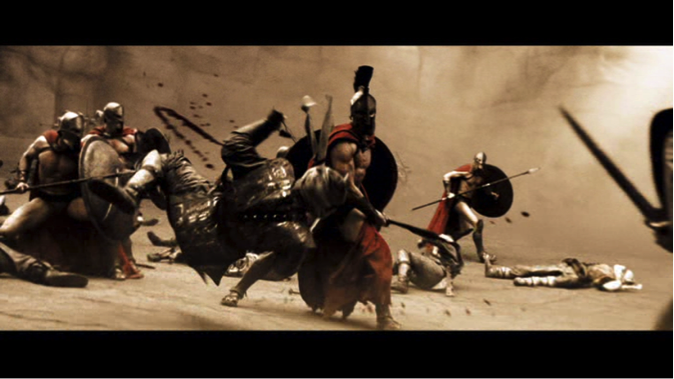Training With A Chronic Illness
Today’s guest post comes from Kelsey Reed, a trainer and co-owner of Strength and Performance Training in Fairfax City, Virginia. I met Kelsey when her and her husband attended mine and Tony’s workshop in the DC area last October, and was very impressed by both her and her husband.
*****
Most of fitness literature out there focuses on on training methods to get stronger, bigger, leaner, healthier, etc.,– which is exactly what you’d expect an industry called “fitness” to talk about.
There is, however, a small-ish (or perhaps not- so- small) portion of the population that has some form of chronic illness. Training for us is, well, different.
My aim with this post is to provide encouragement and practical strategies to anyone out there who is either battling a chronic illness, or may be dealing with a long-term healing process from a prior injury.
Can it be frustrating and disheartening? Yes, absolutely. But it’s up to you to decide whether that frustration morphs into an insurmountable obstacle, or an opportunity for learning and personal growth.
A little background: my husband and I have Lyme disease. My symptoms include, but are not limited to: joint pain, muscle pain/weakness (the irony of a weakened strength coach is not lost on me), foggy brain, fatigue, difficulty with concentration and comprehension, vertigo, neuropathy… the list continues.
Now, for someone who has trained with a “go heavy or go home” attitude for most of her life, and who has competed in bodybuilding and powerlifting competitions, the past 2 years have been humbling, to say the least. Both my husband and I have noticed a significant decrease in our strength and stamina, alongside an increase in fatigue and joint pain, notwithstanding our best efforts to coax more effort out of our bodies. Even a mere bodyweight pushup may, out of seemingly nowhere, make my elbows feel as if Thor the thunder god took his warhammer and smashed my radiohumeral joints with all the might he could summon.
It’s been quite the mental shift for us. Training too hard –which, sadly, is not that difficult to do in our present — often leads to more pain, more fatigue, and, sometimes, an exacerbation of all our symptoms. It’s like throwing gasoline on a fire: it doesn’t require much of a stimulus to cause everything to erupt.
Despite all that, do you know what makes me feel “normal”? Training! I’m firm believer that no matter the illness or injury, you can always find a way train (obviously, within reason). Some days, I’m mentally energized by merely being around iron- even if I’m not lifting copious amounts of weight. I joke with my husband that I get “anemic” if I go too long without holding a barbell.
As Dean often champions – having trained a multitude of people with various illnesses and injuries – regular exercise is medicinal. When applied appropriately, it attenuates muscle loss/weakness, aides in bolstering immunity, it focuses your attention elsewhere and can reduce anxiety and depression (often companions of chronic illnesses), and if nothing else, the rush of endorphins will elevate your mood to happy status.
Training with Lyme has taught me many lessons and I’d like to share a few.
1. Drop the Victim Mentality
Yes, having a chronic injury or illness is not the first thing you’d put on your Christmas list. It’s tough and it doesn’t seem “fair.” If you need to scream and vent, then do so.
But don’t dwell on it; move on quickly.
It’s astounding how adept we humans can be at cataloging the things that hold us back. This is true for many people, chronic illness or not. Complaining and wallowing in self-pity is way easier than facing the reality of the situation and choosing to take positive action regardless.
Speaking to myself as much as any other person with a chronic illness, particularly those whose illness developed later in life: this is the cross we have to bear, but we must choose whether we bear that cross with dignity or with defeat. Your choice. Dwelling on what you “used to” be able to do leads to lack of motivation and feelings of entitlement, but last I checked we’re not actually entitled to anything in this life. It’s a difficult shift in mindset to find the “new normal,” but if we don’t try to move on, we won’t.
This step must come first. If you don’t do this, then nothing else will follow.
2. Know Thyself-
My training sessions are vastly different than they were two years ago, heck, even 6 months ago, because of Lyme. My gas tank of energy is much smaller and runs out faster.
Realizing that you need to adjust your training based on your health is extremely important to maintaining any semblance of a regular training plan. Push too hard, and you could be sidelined for several days or more. The ability to read your body- that is, learning how to back off when you need to or push it a bit when you’re feeling good – is even more important to the lifter with immune system internal warfare.
the raging immune system battle
I’m currently using Dan John’s 40 Day Program and it is perfect. It takes about 20 minutes, so I don’t run out of gas for the rest of the day. I’ve been able to maintain strength without killing my joints.
3. Be Flexible-
I like to make plans and I like to stick to those plans. I delight in writing my training waves and progressions. It used to really, really annoy me when I was forced to deviate. I used to, pridefully, push through to accomplish the plan regardless of how I was feeling, just for sake of sticking to the plan…
Turns out, chronic illnesses don’t follow plans or progressions. They don’t care what advanced form of periodization you used to write your current program.
I find myself deviating from my original plans a lot nowadays. I really have no idea how I’m going to feel until I wake up, or sometimes I’m hit in the middle of the work out and I need to pull back. Due to the undulating nature of chronic illness, remember that it is perfectly ok to change the plan (think back to point #2).
4. Train to Epic Music-
I discovered the Pirates of the Caribbean station on Pandora. It is excellent. Songs like THIS are on that station as well as the Imperial March. I feel heroic and superhuman training to Darth Vader’s theme, even if I’m only doing crawls.
5. Find What You CAN Do-
There are two types of people in this world: those who focus on what they don’t have and what they can’t do, and those who choose to be grateful for the things they do have and the things they can do.
Right now, the list of exercises that don’t hurt is rather small. However, my progress and mindset will suffer and stall if that is what I focus on. Instead, I concentrate on what I can do (hence Dan John’s 40 day program: only 5 exercises) and I hammer them as hard as I can.
It’s terribly easy when you’re sick or injured to slip out of good habits. I get it; it stinks to feel like garbage. Yet, I imagine I would only feel worse had I stopped training when I became ill. Mark Rippetoe says, “Strong people are harder to kill and more useful in general,” and it couldn’t ring more true for those fighting the hostile microscopic assassins that plague our bodies.
About the Author
Kelsey Reed is a Certified Strength and Conditioning Specialist (CSCS) and is head coach at Strength and Performance Training in Fairfax, VA. Bitten by the iron bug at 16, Kelsey has been lifting ever since. While she was in college, she competed in bodybuilding and powerlifting. She earned her bodybuilding pro-card in 2008 and set two All-American powerlifting records in 2009. Now she spends her days teaching and coaching others in the Iron Game. In her down time, she lives life on the wild side by not following recipes when she cooks, fighting battles through characters fantasy fiction novels, and attempting to make her cats love her.





One Response to Training With A Chronic Illness